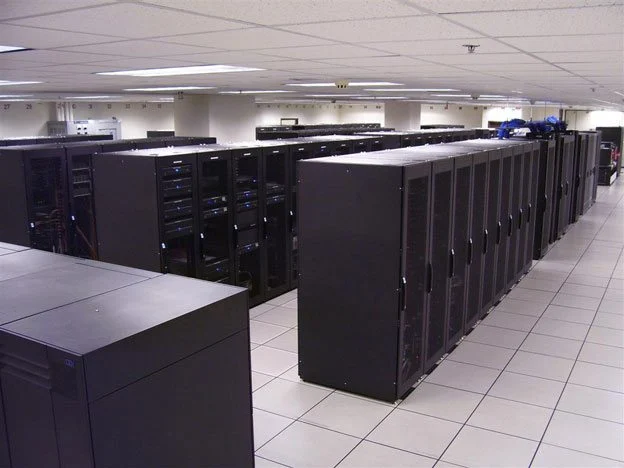Eaton UPS Maintenance

Corrective and Preventive Maintenance
Maintenance of the UPS consists of preventive and corrective . Preventive maintenance consists of a scheduled list of activities. Performing these activities keeps the UPS in good working order and helps to prevent failures.
Corrective maintenance is performed as a result of a failure. Corrective maintenance fixes the problem and gets the unit working again.
A standard maintenance procedure cannot be developed for all types and sizes of UPS units. The manufacturer’s user’s manual should always be consulted as to specific maintenance requirements and troubleshooting diagnostics guidelines.
Safety
Do not rely on memory. Follow the user’s manual guidelines. Such guidelines should provide safety precautions. If your user’s manual limits the maintenance that can be provided by the user, follow the manual’s instructions unless general instructions are supplemented with additional guidance. Physical maintenance or troubleshooting should only be performed by personnel trained on the system. Operating personnel not instructed in UPS maintenance must limit their efforts to identifying the symptoms of a fault. Always be aware of the DANGER, as voltages within the UPS modules and associated switchgear are lethal.
Lethal voltages are present even when the output circuit breaker in the UPS is open. It is necessary to open the circuit breaker in the distribution panel feeding the UPS and the UPS bypass circuit breaker, plus opening the direct current (dc) link connection to the battery, before all dangerous voltages within the UPS are eliminated. Capacitors may need to be discharged of their stored energy. Use CAUTION when operating UPS equipment to prevent serious injury or death.
Preventive Maintenance
Periodic maintenance is required to maintain the integrity and lifetime of the battery. Power electronic equipment also requires scheduled maintenance even though solid-state devices are used. Preventive maintenance may require that the UPS system be shut down.
A transfer of the critical load which may not provide the power enhancement capabilities of an UPS system is something that the user must tolerate in order to obtain maximum reliability and minimize downtime and repair costs.
1.Records
Preventive maintenance is systematic maintenance. The objective is to minimize equipment operating problems and prevent failures by making minor or necessary repairs before major operating difficulties occur. The general condition of the equipment needs to be evaluated periodically, and records need to be maintained for comparison at subsequent inspections. Recorded information is more reliable than a maintenance technician’s memory.
Records should be concise but completely describe equipment conditions. Inspection records should provide complete information on the following topics, preferably on separate record sheets.
(a) Equipment record
This record should list the basic information on the equipment itself, e.g., manufacturer’s identification, style, serial, size, location, etc., and incorporate inventory-control data for spare parts. Warranty requirements covering uninterruptible operating conditions should be abstracted from the user’s manual.
(b)Repair Cost Record
This record should provide a history of repair and associated costs of maintenance for the UPS system. It is an essential diagnostic record for avoiding future difficulties, especially for systems determined to be of poor quality, misapplied, or marginal for the application.
(c) Inspection Checklist
This list should provide necessary and pertinent information on points to be checked and establish the recommended recurring dates when these checks should be made. Since shutdown may require a sliding window period, the amount of time for which this request must precede the shutdown window should also be stated.
(d)Periodic maintenance Schedule
This schedule provides a complete listing of the day-to-day, weekly, monthly, and annual duties which should be reviewed on the same periodic time basis so that potential trouble situations can be investigated and corrected as soon as possible.
(e) Maintenance Inspection and repair record
These necessary and vital documents should be completed in detail by the inspector or an assigned individual in the maintenance department. Maintenance personnel usually report their findings and corrective action on assignment sheets or job cards. Permanent records are a useful guide to each UPS system’s general condition and reliability. It is important to know the frequency and type of repair and how often there is a need for a complete overhaul.
2.Use of records
These records provide for a workable preventive maintenance program. The information obtained from the necessary periodic inspections can be quickly lost.
This is particularly true when test results are required. Unless records and data on the test and performance of equipment are retained, the maintenance program will be defeated. Unless records are updated at each succeeding test period, valuable information is lost. Comparative test data materially assists an UPS specialist in defining problems, especially when test results differ from manufacturers’ recommended settings or actual factory test data. Significant changes in comparative test data can, in general, be related to the equipment’s condition.
3.Scheduling
Scheduling of UPS and battery maintenance is normally based on the manufacturers’ recommendations. Since an UPS system is vital to the operation of critical loads, it may be considered advisable to provide more inspections than those the manufacturer recommends. Certain items on the UPS should be inspected daily or weekly.
This inspection can be done by operating personnel, but data should be recorded and sent to the appropriate maintenance point not more than 5 days after being recorded. Battery maintenance should be done by maintenance personnel. Visual monitoring data should be recorded daily for the UPS, and if recorded for the battery, the recorded data should be handled and sent on to the maintenance department on a weekly basis.
4.Periodic System status Check
The continued monitoring of the operating status of any electronic equipment greatly enhances the probability that failure of that equipment will be prevented. Daily observation is advised but do not provide less than weekly checks. Personnel involved in status monitoring should be those most concerned with the equipment’s proper functioning.
(a) Ups system in Computer room
Computer room operating personnel should become familiar with the equipment and its various operating indications. They should maintain records on all findings or occurrences during preventive maintenance. The operating personnel shall check all lamps on mimic bus and alarm status indicators.
They shall have maintenance personnel replace inoperative bulbs. Also, they shall check input, output, and bypass voltages and currents and all other system status readings and compare them to the required specifications.
A copy of the requirements which must be met, exceeded, or not exceeded should be included as a part of the inspection checklist. Maintenance personnel shall be called to apply troubleshooting procedures if abnormal values are indicated. Operating personnel may also ensure adequate ventilation and cooling by checking that all fans are operational; ensure all doors, drawers, and covers are secured; and check for unusual noises and odors.
(b) Ups systems in dedicated UPS room
These systems will normally have remote displays and alarms. Display panels usually indicate problems only to the extent that they affect computer operations. Summary alarms keep the information simple and easy to understand.
A usual system would include “on battery,” “battery near discharge,” “overload,” and “UPS operating abnormality.” In a location where the UPS is in a dedicated room, the periodic monitoring records of the UPS system would be provided by maintenance personnel. Computer room operating personnel would only record battery cycling, time, discharge, overload, and abnormality and advise maintenance personnel at the time of an alarm indication of the problem displayed.
5Major Systems Inspections
These should be performed at least annually on small to medium systems and semiannually on large to very large systems. By performing this type of maintenance on a scheduled basis, it is possible to find and remedy potential problems before the system’s operation is affected. Table 5-1 provides general guidance for the major system inspection, however, the manufacturer’s recommendations should be strictly followed.
6.Minor Systems Inspections
Minor system inspections should be provided either after 5 months from an annual major inspection or after 3 months from a semiannual major inspection unless a more frequent requirement is recommended by the manufacturer. Minor system inspections should include at least the first four items listed under major inspections. Off-line load testing is required if major component replacements are required.
Subscribe to Our News Letter
For more Information Contact our Engineers/ Technicians

ENGINEER::KIPKORIR